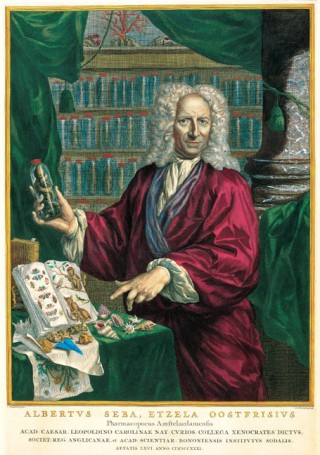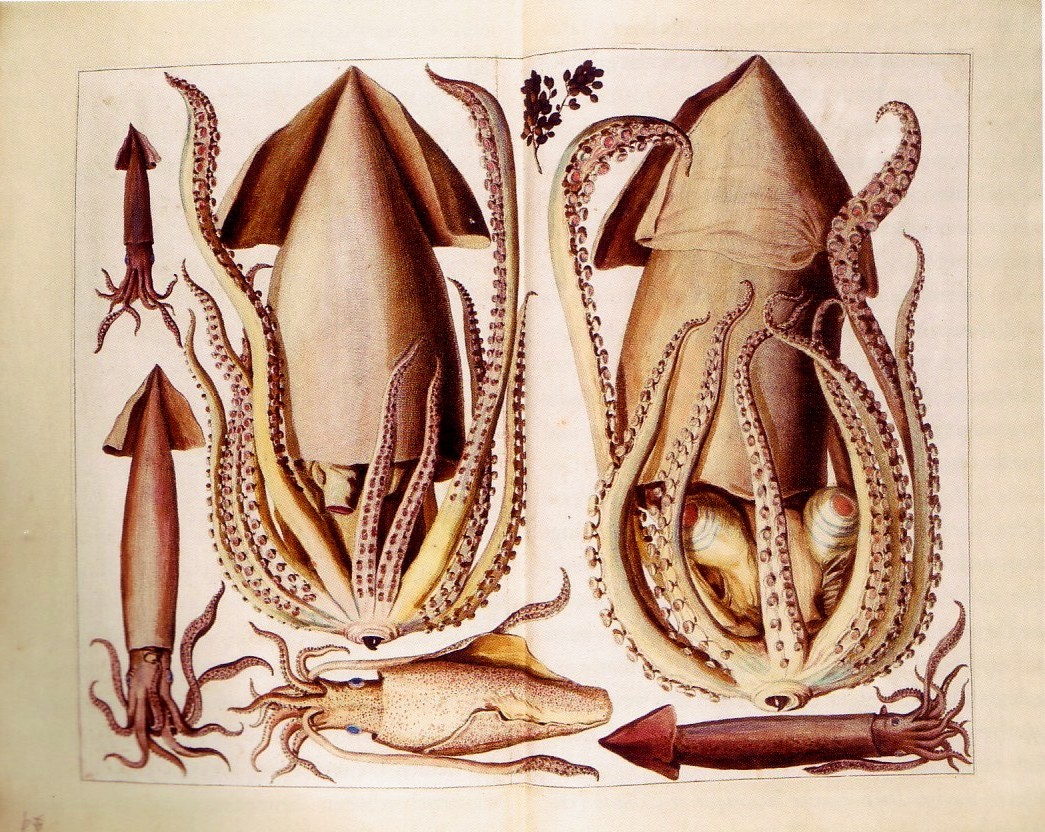Hullo my lovelies! I recently purchased this necklace, made by the lovely and talented local artist. I'd often come across the meticulous illustrations of Albertus Seba, but never before knew anything about the man behind the vast collection.
Albertus Seba (1665-1736) was an avid collector of different specimens of the natural world.
He traveled all over the world collecting exquisite pieces from the East and West Indies, among these no less than 700 jars containing the rarest exotic animals and many particularly rare snakes.
He also gathered beautiful and rare conch, the finest and most complete butterflies from the 4 corners of the Earth.
Seba commissioned artists to make meticulous drawings of these diverse objects from his collection.
He went on to publish these drawings, supplemented by commentary, in a four-volumed set entitled Loccupletissimi Rerum Thesauri Accurata Descriptio (abbreviated in the following as Thesaurus).
The large and magnificent work, incorporating an impressive total of 446 copperplates, was published between 1734 and 1765, after his death.
This pictorial record of Seba's unique collection is now available in reprint. For a better appreciation of this major publishing enterprise, it is necessary to take a closer look at the life and historical context of the man behind it.
By becoming an apothecary, Albertus Seba, who was born in 1665 in the East Frisian town of Etzel, chose a profession with close ties to natural history.
Doctors and apothecaries were pioneers of the empirical sciences, which had been growing significantly in importance since the Renaissance. Unlike today, medications were not synthetically made but mixed together from natural constituents.
A whole range of traditional recipes were available to those versed in the art of creating remedies from animal, vegetable and mineral ingredients. But many did not stop there.
They continued the search for new methods, collecting natural specimens from distant lands, studying them, and testing their potential uses.
Their passion for collecting and researching often extended beyond immediate pharmaceutical applications. In many instances apothecaries started major natural history collections and contributed personally to the growing knowledge of nature. Seba's collection of natural specimens also went far beyond what was required for the normal exercise of his profession.
With his "Die Deutsche Apotheke" (German Apothecary's Shop), as he called his business, Seba rapidly earned an excellent reputation for himself. Even the Russian tsar Peter the Great trusted his pharmaceutical expertise, purchasing medicines from him for many years.
Financially, too, he was successful - something which would enable him to establish his comprehensive collection of natural specimens.
Not relying solely on casual customers who happened to pass by his apothecary, Seba actively sought them out.
He traded in drugs from overseas, advertising his prices in an Amsterdam newspaper. He supplied departing ships with cases of medicines and treated their crews.
Whenever a ship arrived in port, Seba would hasten down to the harbour without delay and administer his medicines to the exhausted sailors. Any natural specimens that they had brought with them he would then be able to purchase at a good price or accept in exchange for his medications.
 In 1728 Seba had become a member of the Royal Society. In 1734 Seba had published a Thesaurus of animal specimens with beautiful engravings.
In 1728 Seba had become a member of the Royal Society. In 1734 Seba had published a Thesaurus of animal specimens with beautiful engravings.The full name of the Thesaurus is, with a dual Latin–Dutch title, Locupletissimi rerum naturalium thesauri accurata descriptio — Naaukeurige beschryving van het schatryke kabinet der voornaamste seldzaamheden der natuur (Accurate description of the very rich thesaurus of the principal and rarest natural objects). The last two of the four volumes were published after his death (1759 and 1765).
Today, the original 446-plate volume is on permanent exhibit at the Koninklijke Bibliotheek in The Hague, Netherlands. Recently, a complete example of the Thesaurus sold for US $460,000 at an auction. In 2001, Taschen Books published a reprint of the Thesaurus, with a second printing in 2006.







No hay comentarios.:
Publicar un comentario